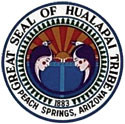Contact Pacific Southwest Brownfields
Pacific Southwest, Region 9
Serving: Arizona, California, Hawaii, Nevada, Pacific Islands, Tribal Nations
Success Stories
Success Stories
Powerhouse Visitors Center – Kingman, Arizona
The Powerhouse Visitors Center ![]() in Kingman serves as a symbol of successful redevelopment and reuse along Route 66 in Arizona. Opened in 1907 to supply a centralized source of electric power to hoists and pumps in area mines, the construction of Hoover Dam in 1938 brought an end to the usefulness of the Powerhouse. In the 1990s, a partnership was formed to rehabilitate the building and the Powerhouse project received several grants from the State Heritage Fund Grant program for rehabilitation of the building.
in Kingman serves as a symbol of successful redevelopment and reuse along Route 66 in Arizona. Opened in 1907 to supply a centralized source of electric power to hoists and pumps in area mines, the construction of Hoover Dam in 1938 brought an end to the usefulness of the Powerhouse. In the 1990s, a partnership was formed to rehabilitate the building and the Powerhouse project received several grants from the State Heritage Fund Grant program for rehabilitation of the building.
Through the efforts of one local visionary, Toby Orr, the Powerhouse is now refurbished and serves as home to the Kingman Visitors Center and Tourist Information Desk, Kingman Chamber of Commerce, and the Historic Route 66 Association offices; it also welcomes more than 100,000 tourists a year. ThePowerhouse is an anchor for other historic redevelopment in the area.
In April 2008, EPA, ADEQ and the City of Kingman hosted a workshop to explore funding opportunities
with local government officials, property owners and consultants at the Powerhouse.
- Workshop flyer (PDF) (1 pg, 216K)
- Agenda (PDF) (1 pg, 267K)
Peach Springs – Hualapai Tribe

Peach Springs, the capital of the Hualapai ![]() people, lies along Route 66 at the road’s closest point to the Grand Canyon. From the start, Peach Springs was home to a variety of commercial activity including gas stations, lodging, restaurants, rafting, hunting, local art, craft, food, and railroad activity. When the new interstate highway bypassed and isolated Peach Springs, commercial activity declined and Peach Springs became a ghost town overnight. The Hualapai Tribe began to revitalize the town in 1990 building a modern lodge and restaurant.
people, lies along Route 66 at the road’s closest point to the Grand Canyon. From the start, Peach Springs was home to a variety of commercial activity including gas stations, lodging, restaurants, rafting, hunting, local art, craft, food, and railroad activity. When the new interstate highway bypassed and isolated Peach Springs, commercial activity declined and Peach Springs became a ghost town overnight. The Hualapai Tribe began to revitalize the town in 1990 building a modern lodge and restaurant.
Meanwhile, through the EPA Jobs Through Recycling Initiative, the Hualapai constructed an Earthship office building across the street from the lodge. The solar-powered Earthship building, constructed from local recycled materials, is a point of interest on Route 66. The new building has spurred installation of sidewalks throughout town helping to restore this once vibrant area. Also, the Tribe’s Cultural Center, reflecting the spiritual values of its culture, is the new focal point for Route 66 in Peach Springs.
Flagstaff, Arizona
City Takes the Lead with Federal and State Support
Flagstaff, Arizona has made significant strides in redeveloping the Route 66 corridor that runs through its downtown. The city purchased a 3.4- acre brownfield site along West Phoenix Avenue, home to a variety of commercial and industrial past uses. It received EPA Brownfields grants and ADEQ funding to conduct environmental assessment and cleanup of the property. In 2009, Flagstaff received American Recovery and Reinvestment Act (ARRA) funding to clean up a creosote pit on the site, along the original alignment of Route 66 at Phoenix Avenue. Soil was removed in 2010 and this cleanup will allow for a flood control project and make way for additional redevelopment.
On an area of the site that required no cleanup, the city constructed a transfer station, which provides a commuter parking lot, bike storage area and bus station in an easily accessible area of the city. Although the transfer station was planned only as the interim use for the property, its popularity among residents has encouraged the city to incorporate a transfer station into the redevelopment plan for the site.
Environmental Assessments Pave the Way for Reuse
The warehouse for Native Plant & Seed on East Brannen Avenue is a former railroad and was at one time a fuel distribution facility with above ground storage tanks. When the current owner purchased the property in 2003, he was told that railroad ties could be buried on the property, as an active but rarely used rail spur runs along the backside of the property.
The owner volunteered his property for a Phase I and II Environmental Site Assessment to determine the extent of contamination. The Phase II soil sampling and testing indicated there was no contamination of concern and no reason for further testing or cleanup. Now the owner no longer worries what may be lurking underground and can use the property in the way he sees fit.
